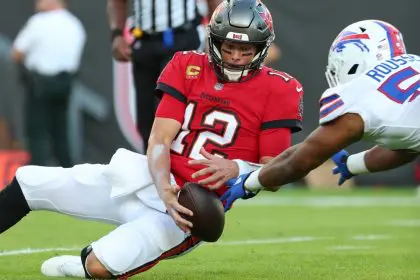The Philadelphia Eagles claimed their decisive Super Bowl LIX victory in New Orleans, overpowering the Kansas City Chiefs 40-22. The triumph emerged through a masterful offensive showcase led by quarterback Jalen Hurts, complemented by an unyielding defensive performance that disrupted the Chiefs’ typically fluid gameplay. The Eagles’ strategic dominance from the opening kickoff set the tone for what would become a historic night in NFL history, marking a new chapter in the franchise’s storied legacy.
Masterful performance defines victory
Hurts orchestrated a commanding offensive display, completing 17 of 22 passes for 221 yards. His dual-threat capabilities shone through with an additional 72 rushing yards, culminating in three total touchdowns. The quarterback’s strategic prowess proved especially vital as the Chiefs’ defense concentrated on containing Saquon Barkley, the current Offensive Player of the Year. Throughout the game, Hurts demonstrated exceptional field vision, making crucial decisions that repeatedly caught the Chiefs’ defense off-balance.
The Eagles’ offensive line provided outstanding protection, allowing Hurts to execute plays with precision and confidence. Their blocking schemes created substantial running lanes, enabling both Hurts and Barkley to maintain consistent ground gains. This balanced attack prevented the Chiefs from committing fully to either run or pass defense, creating opportunities for explosive plays throughout the game.
Defensive dominance shapes game narrative
Philadelphia’s defensive unit established their authority early, setting a new benchmark against Patrick Mahomes with six quarterback sacks. This persistent pressure yielded two crucial interceptions, including rookie Cooper DeJean’s defensive touchdown that helped establish the Eagles’ commanding lead. The defensive front consistently collapsed the pocket, forcing Mahomes into uncomfortable throwing positions and disrupting the Chiefs’ timing-based passing attack.
The Eagles’ secondary coverage proved equally impressive, maintaining tight coverage on Kansas City’s receivers and limiting yards after catch. This comprehensive defensive effort effectively neutralized the Chiefs’ typically explosive offensive capabilities, holding them to their lowest scoring output of the season. The defensive coordination between all levels – line, linebackers, and secondary – showcased the team’s exceptional preparation and execution.
Strategic gameplay defines championship moments
The Eagles’ systematic dismantling of the Chiefs’ gameplan unfolded through several pivotal sequences:
- Hurts initiated scoring with a one-yard touchdown run
- A 12-yard connection between Hurts and AJ Brown expanded the lead to 24-0 by halftime
- DeVonta Smith secured a 46-yard touchdown reception, pushing the advantage to 34-0
Kansas City’s attempts at momentum reversal, including Mahomes’ three touchdown passes, proved insufficient against Philadelphia’s established dominance. The Chiefs’ ground game particularly struggled, managing only 24 yards across seven carries. This one-dimensional approach played directly into the Eagles’ defensive strategy, allowing them to maintain control throughout the contest.
Historical significance emerges
This victory carries particular weight as it prevented Kansas City’s potential three-peat Super Bowl achievement. Philadelphia’s season culminated in an impressive 17-3 record, with their final two victories showcasing a commanding 95-37 scoring differential. The Eagles’ defensive performance draws comparisons to legendary units like the 1985 Chicago Bears and 2000 Baltimore Ravens.
The win represents Philadelphia’s most complete team performance in franchise history, combining offensive efficiency with defensive excellence. This balance suggests a sustainable model for success that could influence NFL strategy in coming seasons, particularly in the evolution of dual-threat quarterback utilization.
Championship legacy secured
The Eagles’ triumph in Super Bowl LIX transcends mere statistics, representing a defining moment in NFL history. Philadelphia’s comprehensive victory, built on tactical excellence and physical dominance, establishes a new standard in championship performance. The team’s ability to execute in all three phases of the game – offense, defense, and special teams – demonstrated the depth and versatility that marks truly great teams.
Looking ahead, this victory positions the Eagles as a model franchise, having built a roster that combines veteran leadership with emerging young talent. Their success blueprint, emphasizing quarterback development, defensive investment, and strategic adaptation, provides a framework for sustained excellence in the modern NFL era. The impact of this championship will likely influence team-building strategies across the league for years to come.














